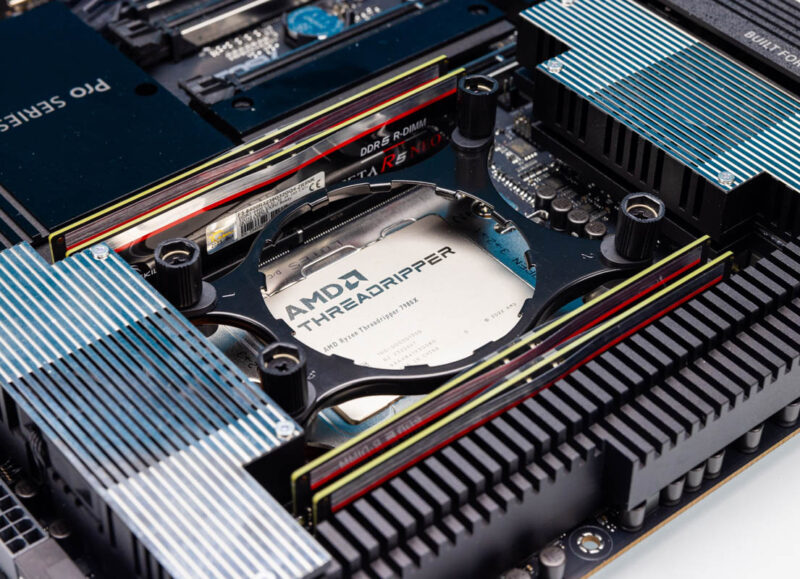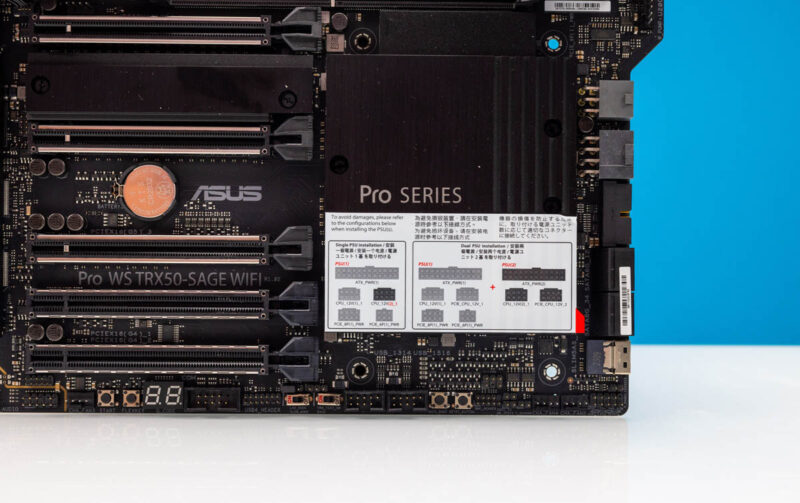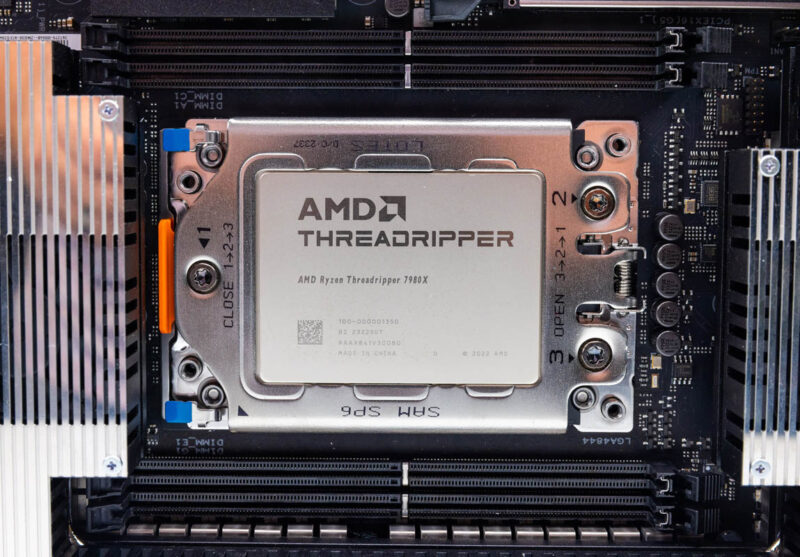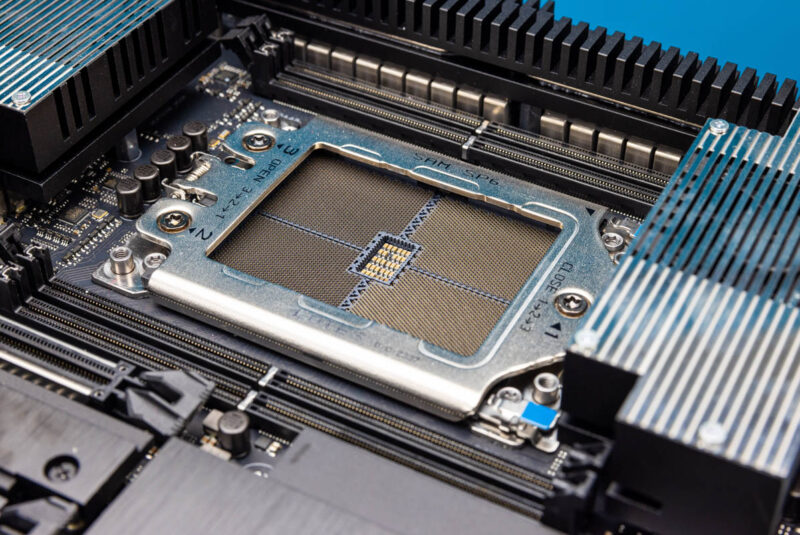AMD Threadripper 7980X Power Consumption
Given our performance discussion, as one might imagine, power consumption varies widely based on the configuration that is being used. Let us first point out that we are using a liquid cooler here, and that

Perhaps the most interesting part is what happens at “stock”. Since we have high core counts counts but lower clocks per core when loaded, we are actually at 470W-520W with the CPU loaded in a test rig. An Intel Core i9-14900K was only 85-105W less, albeit with a different power supply and fewer memory channels. As Intel has pushed its desktop parts up the V/F curve to get clock speed, it is sucking power like crazy to do so. AMD is not immune from this as the AMD Ryzen 9 7950X system we had setup is around 140-165W lower. The Intel Xeon w9-3495X would usually be around 10-15% more in a somewhat similar configuration.

Using the ASUS board’s AI overclocking feature pushed power consumption and frequencies way up. Our same system was now pulling 750-820W but with a massive performance increase. Just to give a sense of scale, to get the Xeon w9-3495X to over 100K on Cinebench R23, it takes power consumption north of 1kW making the Threadripper 7980X almost shocking.
We are about to start our AMD EPYC 8004 Siena series with multiple platforms, but to give a bit of a preview, if you thought this was a great power consumption result, then that is going to be shocking for many out there.
Final Words
The AMD Ryzen Threadripper 7980X is a good part when clocked at stock. From a power consumption perspective, it is very efficient. However, if you buy this type of system, get a board that lets the CPU use more power. Get RAM that can run well beyond DDR5-4800 speeds. All the sudden, this turns into an almost scary fast platform.

All is not perfect, however. Many applications do not scale to 64 cores. We tend to run workloads that do since we have been testing systems with 128 cores/ 256 threads for going on five years now. The two areas that we wish AMD did not skimp on was PCIe Gen5 lanes. A $5000 64-core part should not have 4-channels of memory and only 48 PCIe Gen5 lanes. A GPU takes 16 lanes, most 100GbE+ NICs will take 16 lanes, and that leaves only 48 lanes for NVMe storage. It is simply not enough for what is essentially a professional workstation, especially at this price level. AMD can call this HEDT, but with systems pushing $8-10K as a starting point, we expect most are going to buy a desktop like this as a professional workstation instead of a gaming PC. With only 4 channels of memory, using 32GB RDIMMs we only get 128GB or 2GB/ core. 64GB DIMMs tend to sacrifice performance and still only allow us to get 256GB maximum. Remember, a NVIDIA RTX 6000 Ada is a 48GB GPU, so 128GB for that GPU plus a 64 core CPU is far from ideal. The fact is that this CPU with an 8-channel memory interface and 112-128 lanes of PCIe Gen5 would end folks looking at the Xeon w9-3495X. Perhaps that is the idea behind the Threadripper Pro 7985WX but from a $5000 CPU the question is why have two SKUs?

The bottom line is this, however, make sure you pair any of these Threadripper, Threadripper Pro, or Xeon W-3400 systems with appropriate platforms. Otherwise, you can be leaving 40% or more of the easily attainable system performance on the table. If you do this, the AMD Ryzen Threadripper 7980X is an absolute scortcher of a workstation CPU at a power efficiency bracket that we have not seen before.




I agree with you about the segmentation, it is not very nice of AMD. Perhaps AMD fears that reasonably priced full fat TR would canabilize the EPYC market.
Then again let’s wait for mobos. It looks like there will be a lot of PCIe4 lanes available. 3 slots x16 PCIe5 if augmented by a bunch of x8 or x16 PCIe4 slots isn’t terrible.
The segmentation is perfectly fine. Lots of professionals just need more PCIe lanes than Ryzen/Core provide, and absolutely can’t afford 64, 96 or 128 cores. The 24 cores part is just great to get above the consumer ground, and four memory channels are more than enough for that.